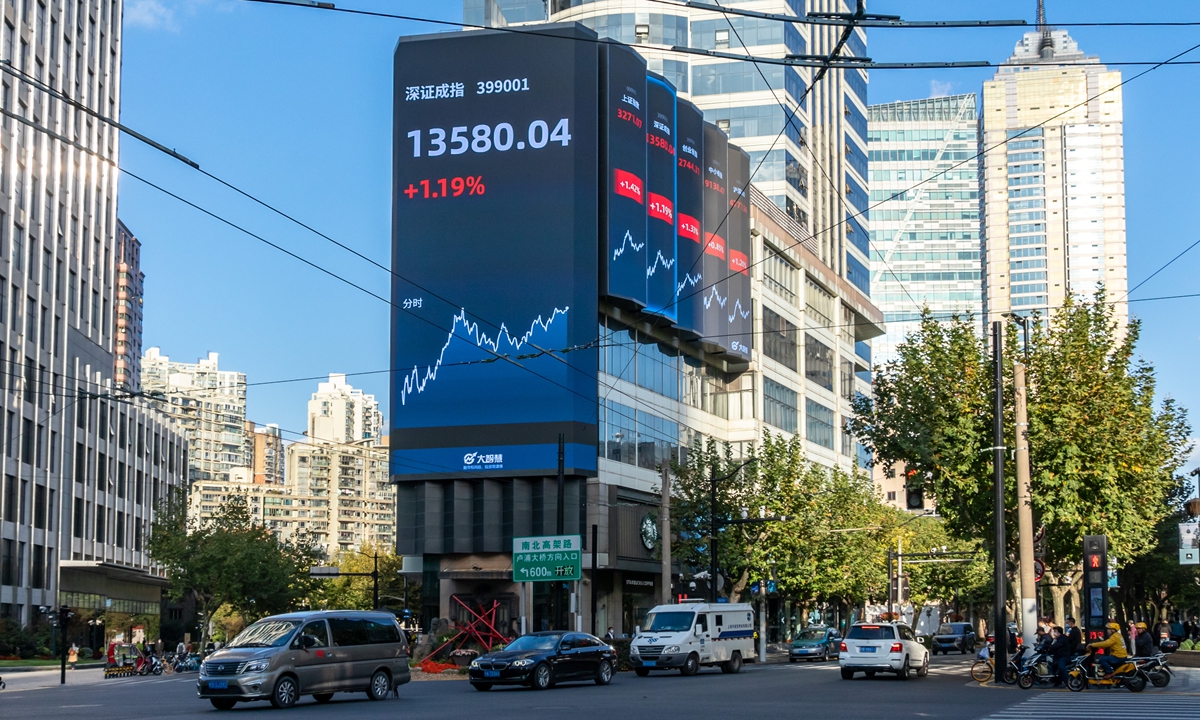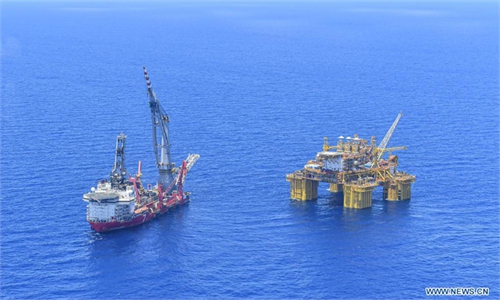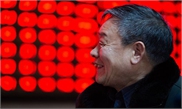Revenues of A-share firms up 10% in H1, reflecting China's robust economic recovery
Corporate earnings expected to improve as growth momentum builds: analyst

Screens on the street of Nanjing Road West in Shanghai show Chinese A-share indexes going up on November 3. Photo: cnsphoto
Most A-share listed companies have already released their half-year financial reports as of Wednesday. The total revenues of A-share companies, equivalent to more than half of China's annual GDP, rose 10 percent in the six months of 2022 despite the pandemic, reflecting a robust economic recovery in China.
Looking forward, as China's economic recovery gains momentum, Chinese public companies' earnings are expected to climb higher in the second half of the year, analysts said.
In the first six months, 4,838 A-share companies achieved total revenues of 33.65 trillion yuan ($4.88 trillion), up 9.99 percent year-on-year, equal to 59.81 percent of China's GDP for the same period. Their net profits amounted to 2.87 trillion yuan, up 5.1 percent year-on-year.
Although their overall performance was good, the differentiation of industry profits was obvious.
Industries with relatively high growth rates were concentrated in energy and materials, boosted by soaring energy prices, Yang Delong, chief economist at Shenzhen-based First Seafront Fund Management Co, told the Global Times on Wednesday.
Material stocks benefited from a boom in China's new-energy vehicle (NEV) sales and recorded fast growth in profits from NEVs' upstream material lithium and other resources, Yang said.
The earnings of energy stocks grew 72 percent in the first half of the year and revenue was up 50 percent compared with last year. Profit growth was concentrated in the new-energy sector.
New-energy stocks included those in solar panels making, which reported stellar revenue in the first half of the year. More than 70 percent of 44 listed solar panel companies achieved year-on-year net profit growth, and for 13 of them, their net profit doubled from last year.
"Solar panels and wind power have developed rapidly in the past two years due to China's technology advances and policy support, which are expected to fuel the growth in the economic transformation," said Yang.
Strong overseas market demand drove up the export value of China's solar panel products, Yang said.
China's solar panel exports totaled $25.9 billion during the first half, up 113.1 year-on-year, according to the Ministry of Industry and Information Technology.
"The proportion of solar power generation in China is still low but is rapidly growing. As the nation plans to increase the share of non-fossil energy to achieve carbon neutrality goal, solar and wind power firms will see huge opportunities and become primary beneficiaries of economic transformation," Yang said.
The rising demand for chips in high-end terminal products, such as the Internet of Things, data centers, artificial intelligence and NEVs, continued to boost the expansion of the semiconductor industry and companies on the industry chain, Shen Meng, an executive director at a venture capital firm, told the Global Times.
SMIC's first-half revenue stood at 24.59 billion yuan, up 52.84 percent, and its profits totaled 6.25 billion yuan, up 19.28 percent.
To maintain its leadership in the capital- and intellectual property-intensive sector, SMIC maintained a high level of investment in technology research and development (R&D) and innovation, Shen said. According to SMIC's financial results, its R&D expenses in the first half of 2022 increased 18.4 percent year-on-year.
Investment in R&D is crucial to the sustainable development and competitiveness of Chinese companies, analysts said.
In July, the China Index of Research & Development (CIRD) stood at 120.8. That is, the overall volume of China's R&D and innovation activities in July increased by 20.8 percentage points from the same period last year. The CIRD was first released on Tuesday by PatSnap, an intelligent property data service provider.
The R&D indexes for semiconductors, AI, new materials, new energy and NEVs were in the range of 125-130, higher than the CIRD, PatSnap told the Global Times.
Consumption is a sector that has been hit hard by the pandemic, but in the long run, the category merits long-term investment, Yang said.
"Stocks related to liquor, food and beverages, and tourism may have a pent-up rally once the epidemic is effectively controlled," Yang said.
Kweichow Moutai, for example, the most profitable liquor brand, recorded revenues of 59.44 billion yuan in the first half, up 17.2 percent year-on-year. Its profit was 29.79 billion yuan, up 20.85 percent.


